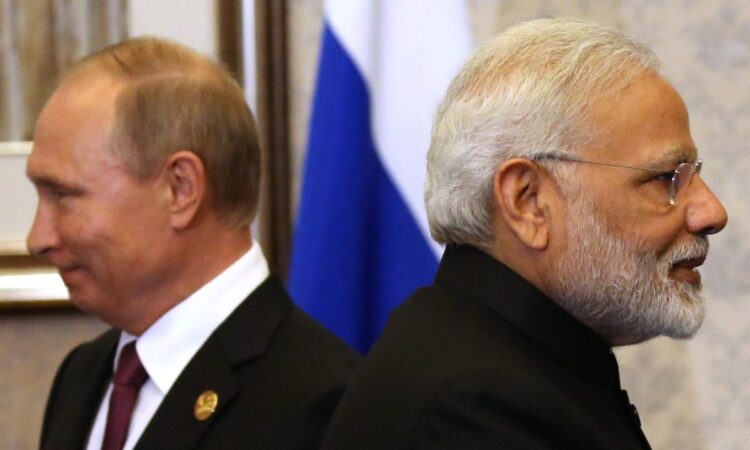Russia wants to topple dollar dominance, but it isn’t even able to deliver oil to India with alternative currencies


-
Payment issues have delayed shipments of Russian Sokol crude oil to Indian Oil Corp.
-
India prefers rupee payments, but Russia is unwilling to use the currency.
-
And the Rosneft unit selling the oil hasn’t been able to open a bank account in the UAE to accept dirham payments.
Moscow has been on a drive to replace the use of the US dollar in international trade, but there are barrels of Russian oil stuck at sea due to issues with paying in alternative currencies.
Shipments of Russian Sokol grade crude oil to state-owned Indian Oil Corp, or IOC, have been delayed by payment issues, Reuters reported on Tuesday, citing two sources familiar with the matter. The seller is the state-owned Russian oil company Rosneft.
The problem arose because the Rosneft unit selling the oil hasn’t been able to open a bank account in the United Arab Emirates to receive payments in the UAE dirham, per Reuters.
This delayed six cargoes of Sokol oil the IOC was supposed to receive from late November to December, Reuters reported, citing shipping data. So the cargoes have mostly been lingering at sea around India and Sri Lanka.
IOC and Rosneft did immediately respond to requests for comment from Business Insider and Reuters.
It isn’t immediately clear how much Sokol oil is stuck at sea due to the payment issue.
Earlier this month, Bloomberg reported about five million barrels of Sokol oil that were being shipped from Russia to India never arrived.
The problems with paying for Sokol oil highlight issues of dealing with Russia amid sweeping sanctions over its invasion of Ukraine.
India has emerged as a major buyer of Russian oil following swathes of Western sanctions against Moscow. This means that dollar trade with Russia is restricted — and this is important since the greenback is the international trade currency of choice.
To be able to buy Russian oil, India insisted on settling trades in the rupee earlier this year. That’s because using US dollars could expose it to secondary sanctions, and it worries about acquiring rubles at a fair rate on the open market.
However, Indian authorities have controls on the rupee, and the currency is not fully convertible — which means it can’t easily be changed into another currency.
This poses issues for Russia, which was stuck with billions of rupees in Indian banks earlier this year. India encourages the rupees to be spent in India itself. The problem for Russia is that there’s not much it wants to buy from India.
To get around its rupee conundrum and reduce its currency risks, Russian officials and oil executives have instead been pushing Indian buyers to pay them in Chinese yuan. It’s also subject to controls and is not fully convertible, but Russia imports a lot more from China.
Yet the Indian government is increasingly uncomfortable with yuan trade since there are currency conversion charges involved and geopolitical rivalry between Delhi and Beijing.
Another currency Russia could use to trade with India is the UAE dirham — but the UAE is increasing its oversight of Russian companies.
Russia’s central bank governor Elvira Nabiullina acknowledged challenges with cross-border payments in a recent interview with local media, but added the country’s economy has been restructuring rapidly to deal with international sanctions.
Read the original article on Business Insider


